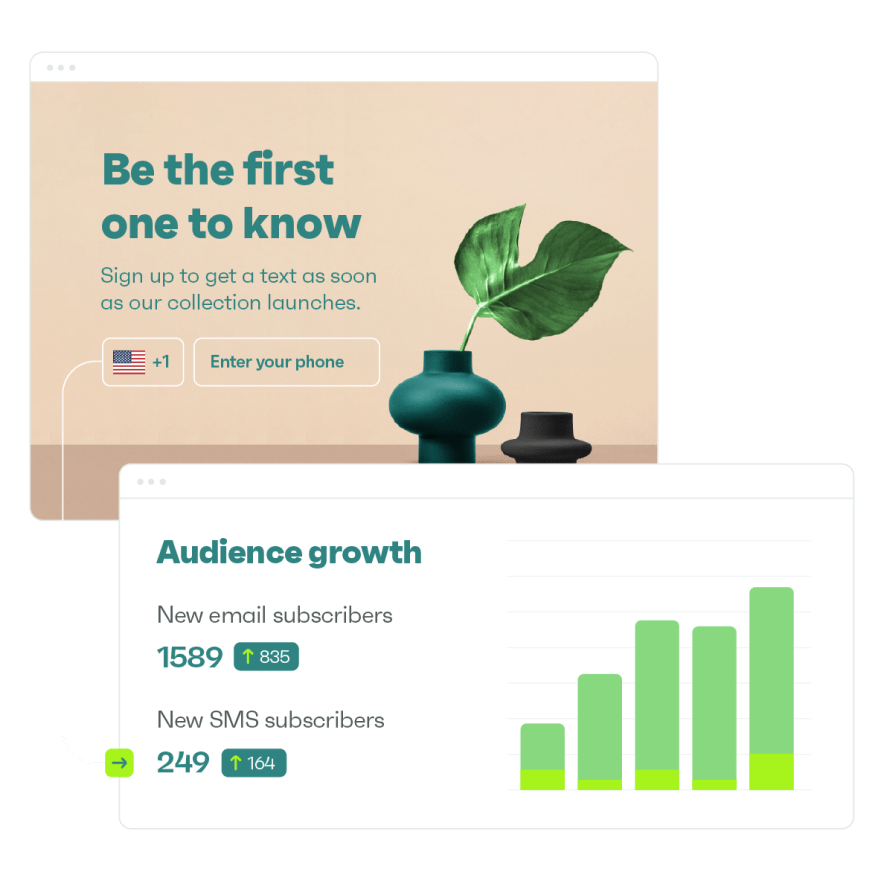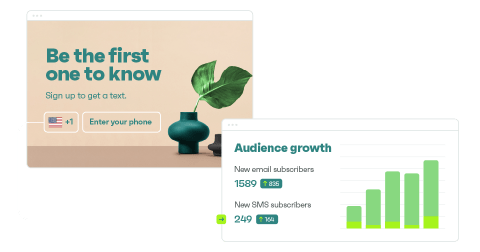Drive sales on autopilot with ecommerce-focused features
See FeaturesA guide to GDPR compliance for email marketing (for 2024)
Raise your hand if you believe GDPR applies only to businesses in the EU (European Union). Well, that’s not true.
The truth is, GDPR applies to any business that handles the personal data of EU citizens, regardless of its location.
In 2024 and beyond, it’s important to make sure your emails are GDPR-compliant to build trust and stay competitive.
And, this process is not as daunting as it sounds.
In this post, we’ll show you the link between GDPR and email marketing and tell you how to stay compliant.
What is GDPR?
The General Data Protection Regulation (GDPR) took effect in May 2018. It’s a set of principles that regulate how the personal data of EU citizens is processed by businesses within and outside the EU.
One of the most important principles is that businesses should collect and process personal data in a lawful and transparent way.
This means that companies should clearly inform customers about what data is being collected, why it is being collected, and how it will be used.
An overview of the key GDPR principles
These 7 key principles described in Article 5 of the GDPR form the foundation of data privacy and protection. They are:
- Lawfulness, fairness, and transparency: Companies must have a lawful reason for collecting data. You need to be upfront about the kind of data you are collecting and why.
- Purpose limitation: Companies need to have a clear purpose for processing data and let people know about it through a privacy notice.
- Data minimization: You should limit data collection to a minimum to achieve your objectives.
- Accuracy: It is the data collector’s responsibility to ensure the data they collect is accurate and kept up to date.
- Storage limitation: Marketers should not keep the data they collect any longer than necessary. You should store the data in a form that allows you to identify individuals for only as long as needed.
- Integrity and confidentiality: Companies must take adequate physical, technical, and organizational measures to protect data confidentiality and security.
- Accountability: The data controller must be accountable for data protection and show GDPR compliance with documentation.
Why comply with GDPR?
The GDPR is more than just a set of rules and regulations. It’s an opportunity for businesses to rebuild trust with their customers by showing that they value privacy and security.
Marketers who focus on GDPR email compliance will not only avoid fines, but also gain a competitive advantage in the long run.
Speaking of fines, GDPR violations can attract hefty penalties, depending on the severity and the nature of the violation.
Less severe violations can attract a fine of €10 million or 2% of a business’s global turnover in the previous year.
Administrative fines can go up to €30 million (approx $32 million) or 4% of a business’s turnover in the previous year, in case of severe violations.
Here’s a real-world example that shows the importance of GDPR email compliance.
The Spanish Data Protection Agency handed out a €10 million fine to Google in May 2022. Google was found to have unlawfully shared personal data with a research agency.
As you can see in the image below, the price of GDPR non-compliance goes up to billions of dollars each year.
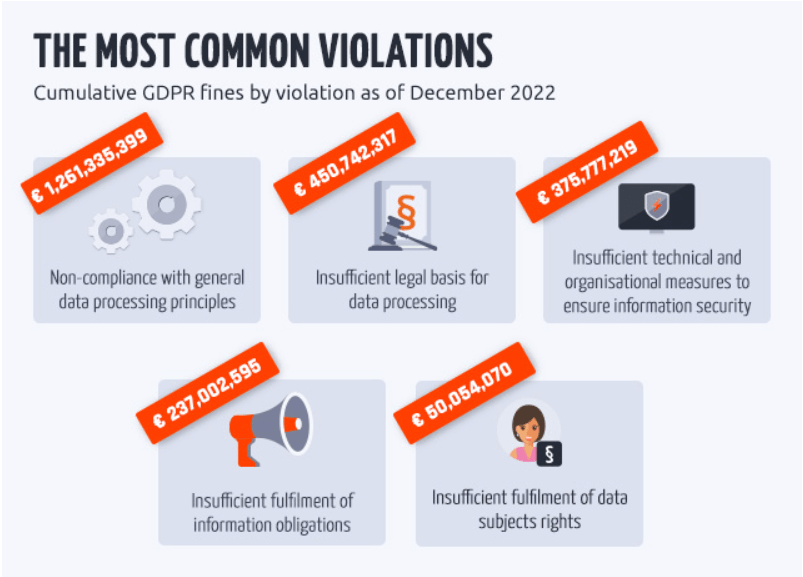
What’s the link between GDPR and email marketing?
For GDPR laws to apply to your business, it is not necessary for EU citizens to actually buy anything from you.
If an EU citizen fills out a signup form on your website, you will need to process their personal data as per GDPR regulations.
So, how can you ensure your email marketing is GDPR-compliant?
Let’s find out.
Key requirements for GDPR email compliance
These are the key requirements for GDPR email compliance:
- Get explicit consent before sending marketing emails.
- State the lawful purpose of collecting data.
- Take the necessary steps to ensure that personal data is accurate, up-to-date, and only used for lawful purposes.
- Take steps to protect personal data from unauthorized access or destruction.
- Document the consent.
- Appoint a data security officer.
- Update your privacy policy.
Clearly, consent plays a crucial role in GDPR and that’s the focus of our next section.
Best practices for email & marketing automation consent
As you know by now, consent must be clear and affirmative.
This means that you can’t use any pre-checked boxes. The data subject or the customer has to check that box actively.
But the burning question is:
When and how should you use a consent checkbox?
Here are the best practices for collecting email marketing consent.
Learn which types of marketing emails need consent
Let’s first take a look at the different types of marketing emails typically sent and which ones need explicit consent.
- Transactional email: These emails are sent when there is a transaction on your ecommerce site. It can include order confirmation, shipping confirmation, or order status emails.
Consent checkbox: Not required
As transactional emails are necessary and are legitimate, they do not require separate consent from EU citizens.
But, keep in mind that you can only use these emails for transactional purposes and not for promotional campaigns.
- Newsletters and promotional campaigns: Newsletters are emails that are sent at a fixed duration, usually to keep subscribers engaged. Promotional emails offer discounts or showcase new products and collections.
Consent checkbox for newsletter campaigns: Not required
Signing up for a newsletter is clear and affirmative consent because the customer knows exactly what they’re signing up for.
Consent checkbox for promotional campaigns: Required
You will need a separate checkbox to send promotional campaigns in addition to newsletters.
- Cart abandonment emails: These messages guide customers back to their shopping carts. The aim is to encourage them to complete their purchases.
Consent checkbox: Required
Cart recovery emails are promotional by nature. So, you need to make sure that the customer affirmatively and actively consents to receive promotional emails from you.
Use double opt-in
A double opt-in is a method used by email marketers to get explicit consent and is a best practice to adopt for GDPR email marketing.
It requires the subscribers to take two actions to confirm their subscription. First, they must submit their email address on a website or landing page.
Second, they must confirm their subscription through an email sent to them.
Here’s how it differs from a single opt-in:
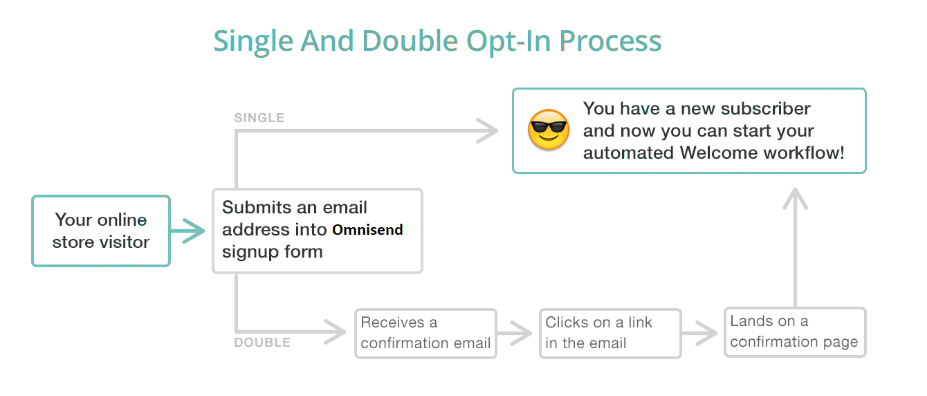
A good example of a double opt-in is this email from Tedium. It asks the recipient to confirm their subscription:
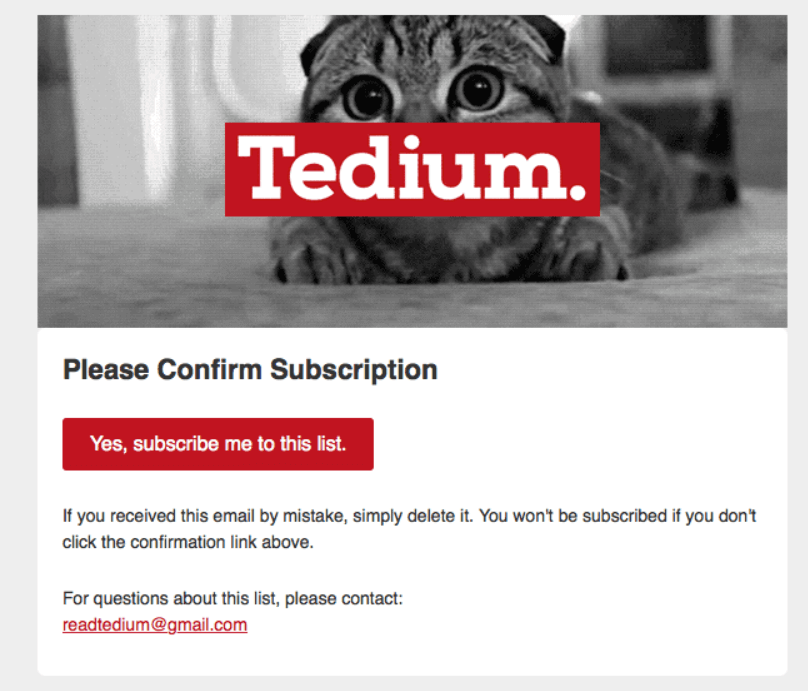
Let users opt out
The GDPR also gives individuals the right to withdraw consent and object to the processing of their personal data.
You can use an opt-out mechanism in emails, such as the one below from Omnisend. This shows your commitment to data protection, privacy, and individual rights.
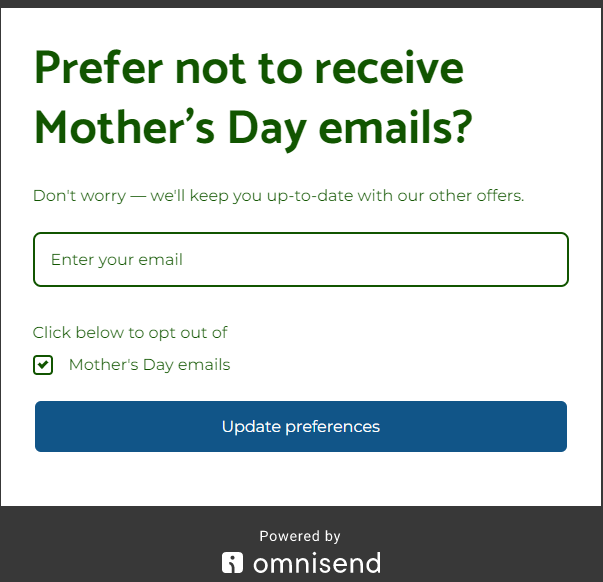
Benefits of GDPR-compliant email marketing
While compliance helps you avoid millions of dollars in fines, the benefits go beyond that.
Here are the many benefits of GDPR email compliance:
- Increased customer trust: GDPR compliance shows that you are committed to protecting customers’ data. This enhances brand credibility.
- More accurate data: By ensuring the data you collect is up-to-date and accurate, you can maximize the effectiveness of your campaigns.
- Less legal risks: GDPR-compliant email marketing reduces the risk of data breaches and other possible data security concerns. This helps protect your business from costly legal consequences.
- Higher conversion and revenue: By targeting customers who have explicitly consented to receive your emails, you can boost the chances of conversions and revenue.
- Minimal to zero downtime: With proactive GDPR compliance measures in place, you can ensure business continuity and avoid downtime.
Final thoughts
Being compliant with GDPR regulations for email marketing is not a one-time thing. You must continuously monitor the compliance process and immediately adapt to any changes in the regulations.
With this guide, we hope that you have a better understanding of what it takes to remain GDPR compliant in 2024.
If you’re seeking a reliable, GDPR-compliant email marketing platform, Omnisend is the ideal choice.
With advanced features, such as double opt-in forms and prebuilt popups, we help you ensure GDPR-compliant email marketing.
Choose Omnisend for a seamless and GDPR-compliant email marketing experience.
quick links
related features
No fluff, no spam, no corporate filler. Just a friendly letter, twice a month.
